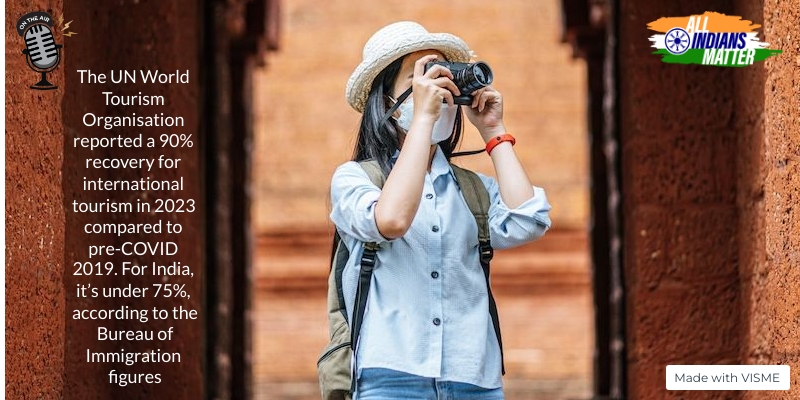Ashraf Engineer
September 17, 2022
EPISODE TRANSCRIPT
Hello and welcome to All Indians Matter. I am Ashraf Engineer.
The shocking death in a car crash of Shapoorji Pallonji’s Cyrus Mistry, who was chairman of the Tata Group before he was ousted, ironically came just days after the National Crime Records Bureau’s Accidental Deaths and Suicides in India report. The report said 1.55 lakh Indians died in accidents on our roads in 2021, up from the 1.33 lakh in the lockdown year of 2020. According to the Ministry of Road Transport and Highways website, India records 13% of the world’s total fatalities on roads. The ministry’s annual report said that in 2019, there were 449,002 road accidents that led to 151,113 deaths. This was up from 2005, which recorded 439,255 accidents and 94,968 deaths. As you can tell, the numbers are rising steadily. The other statistic to worry about is the severity of accidents, or the number of persons killed per 100 accidents. That rose sharply from 21.6 in 2005 to 33.7 in 2019. What can be done to make India’s roads safer?
SIGNATURE TUNE
A lot of attention has been focused on Mistry not wearing a seat belt at the time of the crash. What few people know is that seat belts are compulsory in the front and back seats. Section 194 (B)(1) of The Motor Vehicles (Amendment) Act, 2019, says: “Whoever drives a motor vehicle without wearing a safety belt or carries passengers not wearing seat belts shall be punishable with a fine of one thousand rupees.”
Accordingly, in February, it became mandatory for car makers to provide three-point seat belts for all front-facing passengers, including the middle seat in the rear row. That’s good because it is estimated that wearing a seat belt reduces the impact of an accident by 80% and the value of seat belts has been observed across the world. For instance, the National Highway Traffic Safety Administration in the US said that of the 23,824 passenger vehicle occupants killed in 2020, 51% were not wearing seat belts. It estimated that seat belts saved 14,955 lives in the US in 2017 alone.
However, Indians seem to dislike them. Usually, only those in the front seats wear them but many consider it a nuisance and don’t belt up at all. So often, we’ve seen drivers keeping the seat belts unhooked and quickly hooking them when they see a cop in the distance.
When it comes to safety, there is also the cost barrier. There was a lot of opposition from car makers when the government planned to make six airbags mandatory in all cars. Car makers argued that it would push up prices of entry-level cars and affect demand.
There is also the problem of poor enforcement of laws. It’s been proven that the reversal in trend in road deaths in western countries during the 1960s was due to significant regulatory changes that transformed the way people thought about road safety. That movement was led by engineers, physicians, lawyers, politicians and the conversation shifted from being driver-oriented to a more balanced approach. That, in turn, led to the establishment of the National Highway Safety Bureau in the US that then became the National Highway Traffic Safety Administration. Eventually, it played a leading role in the enforcement of safeguards such as airbags and seat belts.
Coming back to India, while national and state highways account for only 5.04% of roads, they account for 61.11% of road deaths. Another report by the Ministry of Road Transport and Highways, ‘Road Accidents in India 2019’, has a more detailed analysis. It points out that India ranks first in road deaths across 199 countries and that national highways accounted for 35.65% of road deaths and state highways 25.46%. About 70% of those killed were in the 18 to 45 age group.
It’s not as if governments in the past have been unaware of this or done nothing. In 2007, a committee wrote a draft National Road Safety Policy. In 2010, the government finalised it, recognising that road accidents primarily impacted the young, poor and vulnerable, and had become a major health issue.
Under the policy, hospitals alongside national and state highways would have to be adequately equipped to provide trauma care. The policy also hoped to raise awareness about safety issues and extend assistance to states with crash investigations and data collection. It took another look at road design and vehicle maintenance norms. It sought to launch an education campaign on road safety practices and strengthen patrolling and rescue operations. Lastly, the National Road Safety Board and National Road Safety Fund were established to supervise road safety measures and finance road activities respectively. Later, District Road Safety Committees were set up to periodically review accidents and collect data on crashes, identify accident-prone spots, etc. They were also responsible for developing a district road safety plan, emergency medical plans and ensuring the availability of ambulances.
Despite all of this, there is no reduction in road accident deaths.
Of course, there are multiple causes of crashes, ranging from human error to speeding, driving drunk and talking on the mobile phone while driving. Accidents are caused also by potholes and poorly-designed roads.
So, any solution would have to cover a lot of ground, from awareness to enforcement and design. Awareness of good practices can be taught early in schools, as it often is, while design would mean raising the standard when building roads, mapping accident spots and installing proper signage.
Focusing on these might mean higher costs but it would save the country far more in terms of medical treatment and losses related to fatalities.
Cyrus Mistry’s death has sparked off conversations on road safety, which should count as a national priority. The crash was a tragedy and it should lead to better enforcement, smarter road design and more awareness about safety measures. If that happens, it would mean that fewer Indians would die in road crashes and that is worth all the effort.
Thank you all for listening. Please visit allindiansmatter.in for more columns and audio podcasts. You can follow me on Twitter at @AshrafEngineer and @AllIndiansCount. Search for the All Indians Matter page on Facebook. On Instagram, the handle is @AllIndiansMatter. Email me at editor@www.allindiansmatter.in. Catch you again soon.






